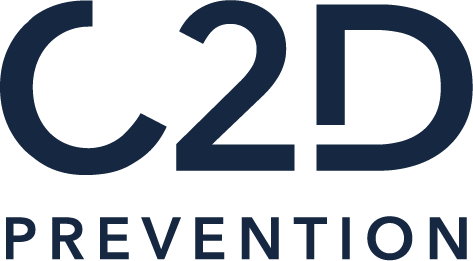WORKSHOP
Shared Vigilance
All involved in my own prevention and that of others

Creating a Collective Safety Culture
Workplace safety depends on everyone’s involvement. Shared vigilance turns every employee into a key player in risk prevention. It’s not just about spotting and reporting hazards—it’s about fostering a collective mindset where prevention becomes a daily reflex.
This workshop aims to raise awareness of potential dangers and equip teams with practical tools to adopt proactive behaviours. Rather than viewing safety as a constraint, participants discover how to integrate prevention naturally into their professional routines.
Drawing on the legal obligations of each individual, neuroscience, and realistic scenarios, this workshop develops three essential skills:
Observation: Detect weak signals before they become hazards
Communication: Express and receive safety concerns without fear
Responsiveness: Adopt a proactive attitude to anticipate and resolve risky situations
Better Shared vigilance means fewer accidents, a calmer work atmosphere, and enhanced productivity.
OBJECTIVE
CONTENT
- Topics covered: the 4 pillars of Shared Vigilance – Knowing How to See, Daring to Speak, Knowing How to Speak, and Knowing How to Accept
- Role-playing exercises: to practice giving and receiving feedback in the most constructive way
FORMAT
- Coaching :
Interactive discussions, role-playingEscape Game
MAKE PREVENTION A REFLEX!
REGISTER YOUR COMPANY NOW
and ensure a safer work environment for everyone!
Format & public ciblé
The workshop can be offered in person or remotely (online version led by a certified VILT coach – Virtual Instructor-Led Training).
Designed for in-person delivery, it is aimed at all employees and managers.
Recommended for groups of 6 to 12 people to promote interactivity and shared analysis of situations.
Objectifs pédagogiques
Drawing on the regulatory dimension of everyone’s safety obligations, neuroscience, and realistic scenarios, this workshop develops three essential skills:
Observation : spotting weak signals before they become dangers.
Communication : knowing how to express your concerns and listen to those of others without fear.
Reactivity : adopting a proactive stance to anticipate and correct risky situations.
Depending on the time available
Workshop Programme
1Understanding the Stakes of Shared Vigilance
To act effectively, one must first understand why shared vigilance is a crucial pillar of workplace safety.
Why is it so hard to anticipate danger?
In professional environments, habit and routine can make certain risks invisible—a slippery floor, poorly maintained equipment, or poor posture can all be overlooked. Yet behind most accidents lies an accumulation of small oversights.
This initial phase enables participants to:
- Identify the main occupational risks and their consequences, specific to their sector
- Understand how attention and distraction work-why does the brain miss certain hazards?
- Learn to recognise weak signals that may precede an incident
2Developing a Proactive Attitude with “Knowing How to See”
Effective vigilance starts with a refined capacity to observe. In this section, participants develop their ability to detect anomalies and analyse potentially hazardous situations.
Methodology:
- Practical exercises in environmental analysis: identifying hidden risks
- Case studies: reviewing real-life avoidable accidents
- Techniques for acting before problems arise: pinpointing preventive intervention levers
Objective: The aim is to enhance active awareness and transform each employee into a safety contributor.
3Daring to Speak Up: Unlocking Safety Communication
Even when we spot danger, we often hesitate to report it. Why? Fear of judgement, fear of disrupting, or feelings of inadequacy can all act as barriers to effective vigilance.
Overcoming barriers to build a culture of open dialogue:
1. Identify the blocks: Why do I hesitate to speak to a colleague in a risky situation?
2. Remove the blocks: What are all the reasons I should speak up?
The objective is to make communication a powerful prevention tool, where speaking up is viewed as a positive and responsible act, both:
- Human: I care about my own safety and that of others
- Organisational and Technical:I raise concerns when I identify a hazardous situation
4Knowing How to Speak and How to Listen: Constructive Communication
The way a message is delivered and received has a direct impact on collective safety. A poorly phrased warning can lead to misunderstanding and tension.
Learning the principles of Non-Violent Communication (NVC):
- Giving feedback kindly and effectively
- Receiving safety feedback without feeling personally criticized
- Managing tone and body language for maximum impact
Through role-play exercises, participants practise ways to alert others and respond with openness and receptivity.
- Learning to assert oneself without fear: techniques for issuing alerts without provoking tension
- Creating a safe and supportive environment where everyone feels legitimate in raising concerns.
- Simulated scenarios to practis1e real-world risk reporting.
5Practical Simulations and Immersive Exercises
To ensure lasting understanding, the workshop includes realistic, hands-on simulations:
- Role-playing exercises: exploring different roles and reactions within a team
- Video analysis of real incidents: decoding human error and contributing factors
- Group work on actual cases drawn from participants’ workplace environments
This phase allows participants to learn by doing, confronting situations where they must apply their newly developed skills.
6Collective Commitment to Sustainable Safety
- Development of individual and group action plans
- Personal and team commitments to apply and promote best practices
- Identification of specific challenges in the organisation and suitable responses
Why choose
this Workshop ?
The Tangible Benefits for Your Organisation :
Regulatory alignment:
Meet individual safety obligations
Increased safety:
Better anticipation and communication reduce incidents
Team cohesion and accountability:
Collaboration and mutual support strengthen solidarity
Active and lasting prevention:
Continuous awareness embeds safety into daily habits
Employee engagement and motivation:
Each staff member becomes a key actor in workplace safety
A calmer, more productive environment:
Less stress, more efficiency, and a more positive atmosphere
Conclusion: Make Safety a Daily Reflex
This workshop offers practical, actionable tools to transform safety into a shared, active, and supportive responsibility.
By investing in shared vigilance, your organisation builds a safer, more effective, and more enjoyable working environment.
Don’t leave safety to chance—adopt shared vigilance today and protect your teams effectively!
